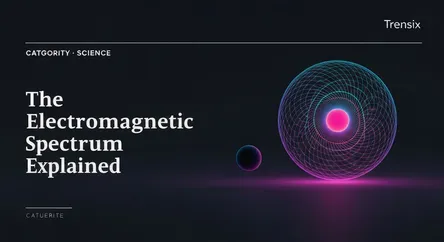Science
The Electromagnetic Spectrum Explained

Explore the full range of light, from radio waves to gamma rays. Learn how the electromagnetic spectrum shapes our technology and view of the cosmos.
What is it?
The electromagnetic (EM) spectrum is the entire range of all types of electromagnetic radiation. It includes everything from long-wavelength radio waves and microwaves to short-wavelength X-rays and gamma rays. In the middle lies the narrow band of visible light that our eyes can detect. All these waves are forms of energy that travel through space, differing only in their wavelength, frequency, and energy. Think of it as a continuous spectrum of light, with most of it being invisible to us. This fundamental concept in physics governs everything from how we see color to how stars emit energy across the cosmos.
Why is it trending?
The EM spectrum is always relevant due to breakthroughs in astronomy and technology. Telescopes like the James Webb Space Telescope (JWST) are trending because they observe the universe in infrared light, a part of the spectrum that allows us to see through cosmic dust and gaze back toward the universe's origin. On Earth, the rollout of 5G and the development of 6G technology are hot topics, as they rely on using higher-frequency parts of the radio and microwave spectrum to achieve faster wireless communication speeds, raising discussions about spectrum allocation and use.
How does it affect people?
The electromagnetic spectrum is woven into the fabric of daily life. Radio waves carry music and communications, microwaves cook our food, and infrared is used in remote controls and night vision. Visible light allows us to see the world, while ultraviolet (UV) from the sun provides Vitamin D but also requires protection. In medicine, X-rays are indispensable for imaging bones, and gamma rays are used in therapies to fight cancer. From the Wi-Fi connecting our devices to the light from distant galaxies, the EM spectrum is fundamental to our existence and understanding.